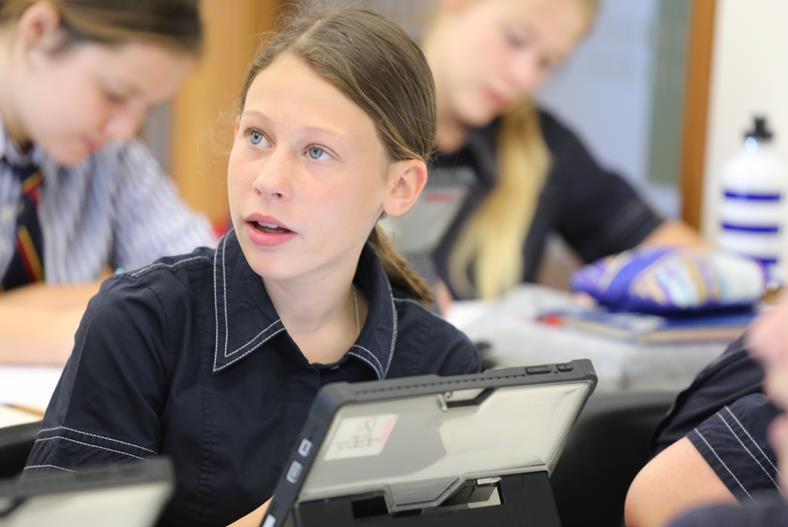
Explicit instruction (or direct instruction) is a teaching method whereby the teacher tells students what to do and shows them how to do it. The education researcher John Hattie notes: ‘The teacher decides the learning intentions and success criteria, makes them transparent to the students, demonstrates them by modeling, evaluates if they understand what they have been told by checking for understanding, and re-telling them what they have been told by tying it all together with closure’1. It contrasts with the constructivist (or discovery-based / enquiry-based) teaching method, whereby students construct their own understanding and knowledge of the world through experiential learning.
Over the past few decades there has been a move away from explicit instruction, which has been derided by some as outdated ‘chalk and talk’. Advocates of the constructivist teaching method argue that the teacher should be the more modern ‘guide at the side’ rather than the traditional ‘sage on the stage’. But, thank goodness, the tables are turning. A significant and growing body of research is showing that explicit instruction is far superior to the constructivist method as a form of teaching. Hattie states plainly that although constructivist enquiry may be ‘a form of knowledge,…a form of teaching…it ain’t’.2 Hattie’s opinion is supported by a 2014 Sutton Trust report that reviewed over 200 pieces of research, concluding that ‘enthusiasm for “discovery learning” is not supported by research evidence, which broadly favours direct instruction’. It noted that ‘if teachers want [students] to learn new ideas, knowledge or methods they need to teach them directly’.3
So I was delighted to read a recent NSW Government paper entitled ‘Cognitive Load Theory: Research that teachers really need to understand.’4 In short, the paper discusses the importance of short-term (or working) and long-term memory to cognitive load, and the implications this has for learning and therefore teaching. It notes that cognitive load theory ‘provides theoretical and empirical support for explicit models of instruction’ because explicit instruction ‘accords with how human brains learn most effectively’. It is heartening to see the government advocating explicit instruction as a teaching method and, moreover, outlining clearly why it is superior to the constructivist teaching method. The report also gives several examples of explicit instructional techniques that can be used in the classroom. All our heads of department have a copy of this report.
Perhaps one reason the NSW government has published this report is to try to stem Australia’s declining results in the OECD’s PISA testing, a regular program of testing of reading, mathematics and science across 72 countries. Asian countries regularly top the rankings across all three areas, whereas Australia’s results have declined steadily over the years.5 Andreas Schleicher, director of PISA, notes that Chinese students, who learn in a school system that favours explicit instruction, are much better than Australian students at higher order skills such as reasoning, critical thinking and non-routine problem solving.6
Of course teaching is a complex job, and an effective teacher is more than just a practitioner of explicit instruction. But research is clear on two things. First, the most important school-based influence on student achievement is the quality of the teacher, in particular the teacher’s content knowledge and the quality of instruction. And second, the explicit instruction teaching method is highly effective.
Teachers are our greatest resource. They are our sages on an incredibly important stage. And when you have good quality teachers who employ good quality teaching methods, the result is good quality learning.
Dr Julie Townsend, Headmistress
BA (Hons) Cert Ed PhD MBA (Ed Ldship) MACE MACEL
https://privateschoolsguide.com/st-catherine-s-school-waverley-nsw/
1.John Hattie, Visible Learning: A synthesis of over 800 meta-analyses relating to achievement. Routledge, London, 2009, p.206.
2.See https://thelearningexchange.ca/videos/john-hattie-explicit-instruction (2012).
3. What makes great teaching?: Review of the underpinning research, Robert Coe, Cesare Aloisi, Steve Higgins and Lee Elliot Major, October 2014, p. 23.
4. NSW Government Centre for Education, Statistics and Evaluation, ‘Cognitive Load Theory: Research that teachers really need to understand’, August 2017.
5. See https://www.businessinsider.com.au/pisa-worldwide-ranking-of-math-science-reading-skills-2016-12?r=US&IR=T
6. See http://www.afr.com/leadership/oecd-expert-reads-australian-schools-the-riot-act-20171005-gyvgq0
